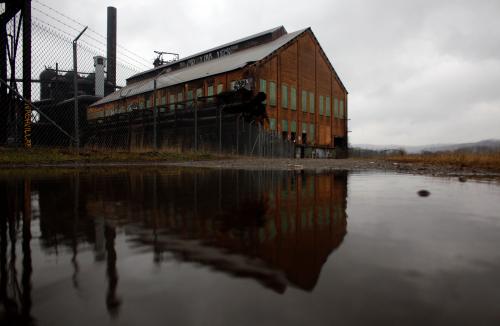During this week’s Spring Meetings of the World Bank Group and International Monetary Fund, the World Bank launched its latest installment of Africa’s Pulse—the biannual publication that analyzes macroeconomic prospects in sub-Saharan Africa. The report notes that the region’s gross domestic product (GDP) is expected to expand by 2.6 percent in 2017, which falls in line with the IMF’s projections released on Tuesday. The modest gains in 2017, which surpass the 2016 GDP growth rate of 1.3 percent, in large part reflect rebounds in the growth rates of Nigeria, South Africa, and Angola—the continent’s largest economies—as they continue their recovery from the slowdowns they experienced due to low commodity prices in 2016.
In addition to outlining the near-term growth projections, a dedicated section of the report focused on Africa’s infrastructure performance, which the authors identified as the weakest of all developing regions. In terms of infrastructure quantity, quality, and access, the report states that the greatest challenges to the region’s infrastructure lie in its electricity-generating capacity and transport sector. According to the report, over the past two decades, electricity-generation capacity per capita has stagnated—despite the fact that coverage has doubled to reach nearly 35 percent of the population—and road density has actually declined. Yet progress has been made in other sectors; for example, telecommunications coverage has spread throughout low- and middle-income countries, and access to safe water has increased from 51 percent of the population in 1990 to 77 percent in 2015.
Improving infrastructure quality and quantity throughout the continent could have substantial effects on economic growth for the region, with the largest growth benefits stemming from promoting electricity-generation capacity: According to the authors’ calculations, if sub-Saharan Africa closed the infrastructure quantity and quality gaps relative to the median of the rest of the developing world, growth of GDP per capita in the region would increase by 1.7 percentage points per year (see Figure 1). If it closed the gap with the world’s best infrastructure performers it could increase growth of GDP per capita by 2.6 percent per year (see Figure 2).
For more information on the region’s infrastructure performance and mobilizing financial resources for closing the infrastructure gap, see the April 2017 edition of Africa’s Pulse.
Figure 1:
Figure 2:
The Brookings Institution is committed to quality, independence, and impact.
We are supported by a diverse array of funders. In line with our values and policies, each Brookings publication represents the sole views of its author(s).







Commentary
Figures of the week: Africa’s Pulse highlights the region’s infrastructure gaps
April 20, 2017